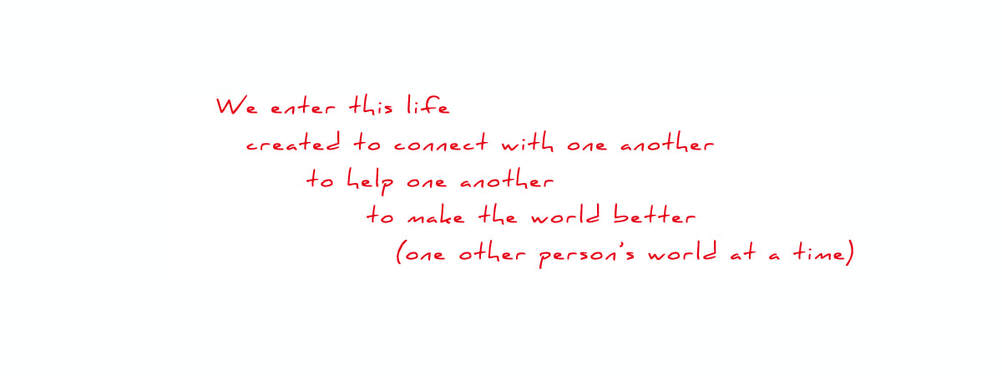Look hard at today to see a brighter tomorrow.So much has changed these days that even the word change became pivot.
Plenty of other vocabulary variations have taken place:
Let’s turn attention back to pivot. As a native of Indiana, the state crazy for basketball, pivots seem humorously simple. But for nonprofit organizations, they’re no laughing matter. For some, a pivot must happen, or the game is over. Seriously. In a basketball gym, rules allow a player with the ball to turn and face a different direction (a pivot) as long as one foot remains on the floor and does not fully lift or slide. In the nonprofit arena, let your mission and values serve as the foot that stays grounded. Swing that program, events plan, or fundraising effort as far as needed. The challenge every organization faces – determining what direction is the right way to go, and how far is enough. A daunting task indeed when considering that no one really knows what to expect in the future. Or even next week. Keep this truth in mind: Nobody knows, which means everyone offers guesses. Oh wait, I mean projections based on the latest models. However, shelter in place does not mean stand still and do nothing. Very few organizations have the option to hibernate until this harsh season changes. You owe it to the people you serve, the people you lead, and the people who fund you to figure out what change(s) to make. The starting point for any pivot: Ask the right questions. The type with hard answers that could change everything and even threaten your organization’s relevance or reason to exist. Or they might affirm it all and point toward new opportunities. Yes, go there. Every entity works within its unique realities, so you and your team must determine the specific questions that ache to be asked. What was once important, practical, or feasible might now be quite different – and will drive the need to consider changing. Some situations call for minor modifications; other circumstances require pivoting with heft. This search for the right questions to ask will only work well when you worry less about how things look and more about how things are. Perceptions often prove far too weak to lean on when challenging times arrive. Reality provides the firm footing needed. To start, let’s rummage through a pile of questions unearthed by other organizations as they dig to find their best pivots, and then ask them in your specific context. How has the constituency we serve changed? For example, if an organization serves students, then all will be fine when school opens this fall, right? Not so fast. Will school open? Will they allow visitors? What schedule will they follow? What changes will take place that may or may not accommodate your program? Organizations that serve in elementary, middle, and high school face these questions, as do those who operate on college campuses. While operational challenges mount, demand might also increase. Keep demand in mind as a story to tell with donors because great cases for funding involve pivoting changes into new opportunities. Key question: How does our program need to change for us to continue pursuing our mission? What about events? Many associations have gatherings as a core element of how they serve members. National, regional, annual, quarterly, networking, training, or any other type of in-person get-together deserves sober scrutiny. For some associations, other income streams will continue to provide funds. Others, though, face dire futures if they can’t assemble their members because events serve as the reason they exist. Even though governors will eventually relax guidelines, that’s not the same as an individual’s willingness to travel and attend. Imagine the value potential from a pivot from gather together to meet you where you’re at. Key question: What shifts should we consider to how we keep our members feeling like they belong and are being served? What about donors? Sure, the stock market will bounce back and with it preserve the investment portfolios that drive the amounts many foundations grant each year, which should preserve the total amount foundations give. However, many made early and extra gifts (to all who did: well done!) that could impact gift levels throughout the remainder of their fiscal years. What about your largest individual donors? Many own businesses, so what bounce will they experience – and when? Lower-end donations will diminish, as seen in recent survey data that shows 64 percent of churches experience decreased giving (click here to read). As the collection plate goes, so goes the small gift segment. Mid-level donors will always remain a hard-to-solve mystery, but smart money will bet on a significant decline in their giving too. However, there seems to be a collective national vibe of getting through this together and an appetite for innovative solutions. How would your donors react to a message pivot that turns remember that we need you into a new story to tell? Key questions: By segment, what can we anticipate from our donors and what should we proactively do as a result? What’s our fresh approach and our new story to tell? What will happen with public funding? Government grants seem generous now, but will money continue to flow to NGOs once the urgency around COVID-19 diminishes? What will the government’s posture look like toward the social services sector whose clients’ needs multiply due to the economic crisis that promises to linger? How reliable will national, state, or local government funding become going forward, especially when tax revenues fall and direct assistance bills mount? When government funding falls short, competition increases for support. But now is a tough time to consider ramping up infrastructure. Has the time come to pivot from react on our own to collaborate? Key question: What options exist to navigate drops in public support, and how might we re-position to avoid such decreases? Pivots and changes have become so common that they will, without doubt, play featured roles in the much-anticipated new normal. Ask the right questions and you’ll be part of it too. © 2020 David Staal. All rights reserved. davidstaal.net
1 Comment
Jenni Gurth
7/20/2020 05:15:44 pm
This is garbage and David is a narcissistic, chauvinistic fraud.
Reply
Leave a Reply. |
AuthorDavid Staal writes, speaks, consults, and has filled a career with executive and leadership positions Blogs/Articles |




 RSS Feed
RSS Feed